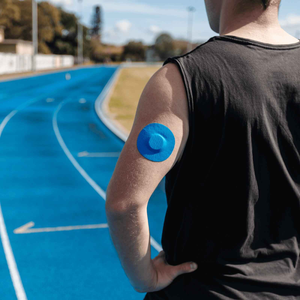Type 2 diabetes is a prevalent and serious health condition that affects millions of people worldwide. While genetics plays a role in predisposition, lifestyle factors also significantly influence the development of this disease. Fortunately, many cases of type 2 diabetes can be prevented or delayed through proactive lifestyle changes and healthy habits. At Type Strong, we're dedicated to empowering individuals with diabetes management solutions, and part of that empowerment includes prevention strategies. In this comprehensive guide, we'll explore actionable steps to prevent type 2 diabetes and promote overall well-being.
Understanding Type 2 Diabetes: Risk Factors and Causes
Before diving into prevention strategies, it's essential to understand what type 2 diabetes is and the factors that contribute to its development. Type 2 diabetes occurs when the body becomes resistant to insulin or doesn't produce enough insulin to maintain normal blood sugar levels. Several factors increase the risk of developing type 2 diabetes, including:
1. Obesity: Excess body weight, particularly around the abdomen, is a significant risk factor for type 2 diabetes.
2. Physical Inactivity: Lack of regular physical activity can contribute to weight gain and insulin resistance.
3. Unhealthy Diet: Consuming a diet high in refined carbohydrates, sugar, and unhealthy fats increases the risk of type 2 diabetes.
4. Family History: Having a family history of diabetes increases the likelihood of developing the condition.
5. Age and Ethnicity: The risk of type 2 diabetes increases with age, and certain ethnicities, such as African, Caribbean, and South Asian, are at higher risk.
Unfortunately, some of these risk factors can't be influenced by lifestyle. However, by addressing the risk factors that can be influenced by lifestyle modifications, individuals can significantly reduce their risk of developing type 2 diabetes.
Healthy Eating Habits: The Foundation of Prevention
A balanced diet plays a crucial role in preventing type 2 diabetes and promoting overall health. Here are some dietary tips to reduce the risk:
1. Emphasise Whole Foods: Base your meals on whole, unprocessed foods such as fruits, vegetables, lean proteins, and whole grains. These foods are rich in nutrients and fibre, which help regulate blood sugar levels and promote satiety.
2. Limit Sugary and Processed Foods: Minimise consumption of sugary beverages, sweets, and processed snacks, as these can cause rapid spikes in blood sugar levels and contribute to weight gain.
3. Watch Portion Sizes: Be mindful of portion sizes to avoid overeating and maintain a healthy weight. Use smaller plates, measure portions, and listen to your body's hunger cues.
4. Choose Healthy Fats: Incorporate healthy fats such as avocados, nuts, seeds, and olive oil into your diet. These fats help improve insulin sensitivity and support heart health.
5. Stay Hydrated: Drink plenty of water throughout the day to stay hydrated and support overall health. Limit consumption of sugary drinks and opt for water, herbal teas, or infused water instead.
Regular Physical Activity: Moving Towards Prevention
Physical activity is another cornerstone of type 2 diabetes prevention. Regular exercise helps improve insulin sensitivity, control weight, and reduce the risk of developing diabetes. Here are some tips to incorporate more physical activity into your daily routine:
1. Find Activities You Enjoy: Choose activities that you enjoy and are more likely to stick with long-term. Whether it's walking, cycling, swimming, or dancing, find something that brings you joy and fits your lifestyle.
2. Set Realistic Goals: Start with small, achievable goals and gradually increase the intensity and duration of your workouts. Aim for at least 150 minutes of moderate-intensity aerobic activity per week, spread throughout the week.
3. Include Strength Training: Incorporate strength training exercises at least two days a week to build muscle mass and improve insulin sensitivity. Bodyweight exercises, resistance bands, or free weights can all be effective options.
4. Stay Active Throughout the Day: Look for opportunities to move more throughout the day, such as taking the stairs instead of the elevator, parking farther away from your destination, or doing household chores.
5. Listen to Your Body: Pay attention to how your body responds to exercise and adjust your routine as needed. Be mindful of any signs of low blood sugar (hypoglycaemia) and have snacks on hand to raise your blood sugar if necessary.
Managing Stress: A Key Component of Prevention
Chronic stress can contribute to the development of type 2 diabetes by increasing insulin resistance and promoting unhealthy behaviours such as overeating or poor sleep. Here are some strategies to manage stress effectively:
1. Practice Relaxation Techniques: Incorporate relaxation techniques such as deep breathing, meditation, or progressive muscle relaxation into your daily routine to help reduce stress levels and promote a sense of calm.
2. Stay Connected: Maintain strong social connections with friends, family, and support groups. Having a strong support network can provide emotional support and practical assistance when needed.
3. Prioritise Self-Care: Make time for activities that bring you joy and relaxation, whether it's reading a book, taking a bath, or spending time in nature. Self-care is essential for maintaining mental and emotional well-being.
4. Set Boundaries: Learn to say no to commitments or activities that cause excessive stress or overwhelm. Setting boundaries and prioritising your own needs is crucial for managing stress effectively.
5. Seek Professional Help if Needed: If you're struggling to cope with stress, don't hesitate to seek support from a mental health professional. Therapy, counselling, or support groups can provide valuable tools and strategies for managing stress.
Adopting Healthy Habits: A Lifelong Journey
Preventing type 2 diabetes requires a commitment to making healthy lifestyle choices every day. By focusing on healthy eating, regular physical activity, stress management, and other preventive measures, individuals can significantly reduce their risk of developing this chronic condition and enjoy a higher quality of life.
At Type Strong, we're committed to supporting individuals on their journey to better health. Our adhesive patches for continuous glucose monitors provide comfort and reliability, empowering individuals with diabetes to live their best lives. Together, let's take proactive steps towards prevention and create a healthier future for all.
Sources:
1. Diabetes UK. (n.d.). Prevention. https://www.diabetes.org.uk/guide-to-diabetes/prevention
2. NHS. (2022). Type 2 Diabetes Prevention. https://www.nhs.uk/conditions/type-2-diabetes/understanding-medication/
3. Diabetes Australia. (n.d.). Type 2 Diabetes. https://www.diabetesaustralia.com.au/type-2-diabetes-remission/
4. American Diabetes Association. (n.d.). Lifestyle Management: Standards of Medical Care in Diabetes—2022. Diabetes Care. https://care.diabetesjournals.org/content/45/Supplement_1/S102





